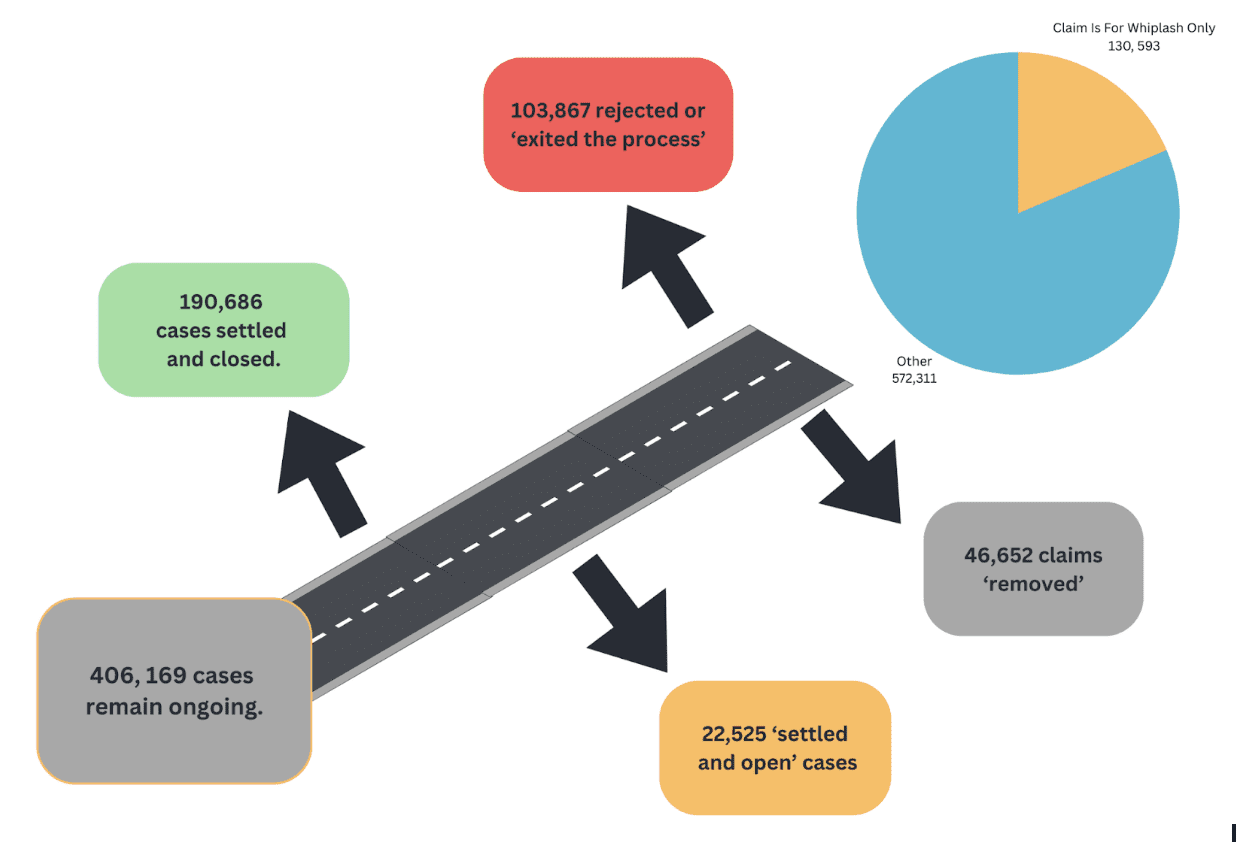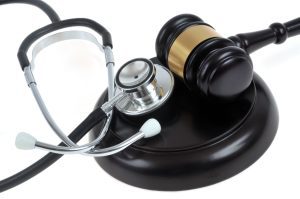This guide talks you through the accident at work claims process. If you have suffered an occupational injury from a workplace accident, you may be entitled to claim compensation.
Firstly, we look at the pre-action protocols and what is involved in the accident at work claims process. Following this, we explain when someone may be able to begin the claims process by stating the claims eligibility criteria that need to be met.
Then, to give you a better idea of what types of workplace accidents you could potentially claim compensation for, we provide examples of how an employer could be liable for your accident and injuries sustained.
Also, we provide an explanation of how settlements are calculated after a workplace injury claim is successful. Additionally, you will discover the benefits of making a personal injury claim with one of our No Win No Fee solicitors.
To talk about your circumstances, you can contact our team of advisors. They are on hand 24/7 to offer you advice and guidance through one of the below contact methods about what next steps you can take. They could also connect you to our solicitors if they confirm that your workplace injury claim is eligible:
- Call 0800 073 8804.
- Complete the claim online form to receive a callback.
- Type a message in our live chat feature in the corner of the screen.
Jump To A Section
- How Does The Accident At Work Claims Process Work?
- When Could You Be Eligible To Make A Personal Injury Claim?
- Examples Of Workplace Accidents
- What Could You Claim For Workplace Injuries And Illness?
- How To Claim With A No Win No Fee Solicitor
- Further Information On The Accident At Work Claims Process
How Does The Accident At Work Claims Process Work?
As part of the accident at work claims process, the Pre-Action Protocol for Personal Injury Claims must be followed. This is a list of actions that must be undertaken or followed before a case can be heard in court, as it helps to show the court that everything was done to resolve the matter before proceedings being issued.
- A Letter of Notification will be sent to the defendant to let them know that you are making a compensation claim against them.
- Rehabilitation should be done as soon as possible. This is where all parties consider whether the claimants needs rehabilitation or medical treatment.
- A Letter of Claim will be sent to the defendant to let them know formally that a compensation claim has been issued against them. Within the letter of claim are the facts of the case, including what injuries the claimant has suffered.
- A response is required from the defendant within the following 21 working days. The defendant then has 3 months from the date of acknowledging the Letter of Claim to carry out their investigations.
- Disclosure – this is where any issues that are being disputed or information that could clarify or solve any issues are exchanged.
- The claimant will attend an independent medical assessment so medical experts can produce a medical report.
- While negotiations are taking place, a Part 36 Offer can be made. This is where both parties put forward an offer so they can settle pre-proceedings.
- Where both parties cannot reach an agreement, Alternative Dispute Resolution methods, such as arbitration and mediation, can be used. If this doesn’t work then the case will have to go to court.
A personal injury solicitor could help you with carrying out these steps on your behalf, should you decide to work with one. To see if you may be eligible to work with one of our solicitors, you can contact our advisors.
When Could You Be Eligible To Make A Personal Injury Claim?
Every employer owes their employees a duty of care, as outlined in the Health and Safety at Work etc. Act 1974. To abide by this duty of care, employers have to take reasonable steps to ensure the safety of their employees while they’re working. Some of these steps may entail performing regular maintenance checks on equipment and facilities, implementing health and safety regulations, and providing the appropriate training and Personal Protective Equipment (PPE) that employees require to do their tasks appropriately.
Thus, here are the personal injury claims eligibility criteria that you must meet to be able to make an accident at work claim:
- An employer owed you a duty of care.
- This duty was breached
- As a result of this breach, you were injured.
What Evidence Could Help You Make A Claim?
Here are some types of evidence that is useful to have to help prove your accident at work claim:
- A copy of the report in the workplace logbook recording your accident.
- CCTV footage of your accident.
- Witness details from possible witnesses who saw your accident and how you were injured. They could possibly provide a statement at a later date.
- Copies of your medical records to show the extent of your injury and the treatment you needed.
- Taking photographs of visible injuries and the accident scene.
One of our personal injury solicitors could help guide you through the accident at work claims process, including helping you to gather evidence. If you seek compensation for your workplace injuries, contact our team to discover whether you can be connected to one of our solicitors.
How Much Time Do You Have To Claim?
In general, you have 3 years to begin a personal injury claim after an accident at work, as outlined by the Limitation Act 1980. The accident at work claims time limit commences from the date you had your accident.
However, the time limit will be paused for a couple of circumstances. These circumstances are if the claimant:
- Was under 18 years old when they were injured. The time limit will recommence from their 18th birthday.
- Lacks the mental capacity to make a claim. The time limit will recommence if or when the claimant regains this mental capacity.
For both of these circumstances, a court-appointed litigation friend may be able to represent the case on the claimant’s behalf while the time limit is paused.
You can find out more information about the accident at work claims limitation period by contacting our advisors today.
Examples Of Workplace Accidents
Here are some example scenarios of how you could be injured at work due to your employer not adhering to their duty of care:
- Falls from heights. For example, your employer gives you a known faulty ladder to use on a construction site. One of the rungs on the ladder breaks as you are using it you fall from the top. This could lead to serious injuries like a brain injury or paralysis.
- Machinery or vehicle accidents. For example, in a warehouse, your employer asks your colleague to use a forklift truck without giving them any training on how to do so. Since your colleague does not know how to operate the vehicle, they accidentally run over your foot by steering too sharply. This could lead to leg and foot injuries and possibly amputation.
- Manual handling accidents. For example, in a retail shop, your employer instructs you to manually lift and carry a heavy delivery load that is too tall to see over the top of. Due to this, you suffer a back injury due to improper lifting technique.
To find out whether you can begin the accident at work claims process today, you can contact our advisors.
What Could You Claim For Workplace Injuries?
For a successful accident at work claim, there may be up to two heads of loss which you could claim in compensation.
General damages is the first head of loss, which is always awarded in a successful case. General damages reimburses you for the physical injuries and psychological injuries you have suffered due to your employer breaching their duty of care. When general damages are being assessed, some of these factors are considered:
- What the initial severity of the injury is.
- If the injured person’s quality of life has changed.
- What treatment is needed and what the estimated recovery time is.
At some point throughout the accident at work claims process, you may be invited to an independent medical assessment in which a private medical professional will conduct a medical report of your injuries and prognosis. This may used alongside Judicial College Guidelines (JCG) to help those valuing this head of your claim. The JCG is a publication with varying guideline compensation figures for different injuries.
Guideline Compensation Table
We have included a compensation table with information from the JCG (apart from the top line, which is not from the JCG). These are just some of the types of injuries that one might suffer following an accident at work. However, all of these figures are guidelines, as each case is unique.
| Injury | Severity | Guideline figures | Comments |
|---|---|---|---|
| Multiple serious injuries with their expenses | Serious | Up to £1,000,000+ | An award for sustaining multiple serious injuries plus the money lost from these injuries, like lost earnings, care expenses or medical costs. |
| Paralysis | Tetraplegia (a) | £324,600 to £403,990 | Those experiencing physical pain and their ability to communicate and their senses will be applicable to the higher end of this bracket. |
| Brain damage | Very serious (a) | £282,010 to £403,990 | The injured person will have little to no language function and only a small ability to follow simple commands. This bracket includes cases where full-time nursing care is requires, such as locked-in syndrome. |
| Foot | Amputation of both feet (a) | £169,400 to £201,490 | Where the ankle joints are also lost. |
| Foot | Amputation of one foot (b) | £83,960 to £109,650 | Where the ankle joint is also lost. |
| Back | Severe (a) (i) | £91,090 to £160,980 | Cases including where sexual function, the bladder, and bowel will be significantly impaired. Also, where nerve root damage leads to loss of sensation. |
| Arm | Severe (a) | £96,160 to £130,930 | An arm injury, such as a serious brachial plexus injury, that has just fallen short of needing amputation. |
| Hand | Serious Damage to Both Hands (b) | £55,820 to £84,570 | There will be a significant loss of function and a permanent cosmetic disability. |
| Leg | Severe (b) (iv) Moderate | £27,760 to £39,200 | A singular leg suffers a crush injury, or multiple or complicated fractures. |
| Knee | Moderate (b) (i) | £14,840 to £26,190 | Injuries involving a torn meniscus or cartilage, or a dislocation. |
Examples Of How Special Damages
Special damages is the second head of loss, which is only sometimes awarded in a successful case. Special damages reimburses you for the financial losses you have suffered due to your injuries. Here are a few examples of financial losses that your injury could cause you:
- Loss of earnings, if you needed to take time off work to recover.
- Car or home adaptations, such as the installation of a ramp.
- Medicine, such as prescription gees.
It is important to collect evidence of your injury’s financial losses in the form of receipts, invoices, payslips, or bank statements to help support your claim for special damages.
Contact us today to discover how much compensation you could potentially receive for your claim. They can also answer any questions you may have regarding the accident at work claims process.
How To Claim With A No Win No Fee Solicitor
If you contact our advisors, they could inform you whether you are eligible to make an accident at work claim. If you seem to have a strong case, they could connect you with one of our specialist personal injury solicitors who could help guide you through the accident at work claims process.
Our personal injury solicitors can offer to work on your case on a specific type of No Win No Fee agreement called a Conditional Fee Agreement (CFA). What this means for you is that you are generally not required to pay legal costs for your solicitor’s work:
- Before the case.
- During the claims process.
- If your claim does not win.
Instead, if your claim is successful, then a success fee will come out of your compensation before it is awarded to you. The success fee is a legally capped percentage of your compensation. This legal cap helps ensure that the majority of your compensation stays with you.

Speak To A Member Of Our Team Today
If you have any further questions regarding the accident at work claims process, you can contact our advisors for free today. They can also provide you with free advice for your specific personal injury claim. To connect with them today, you can:
- Call 0800 073 8804.
- Complete the claim online form to receive a callback.
- Type a message in our live chat feature in the corner of the screen.
Further Information On The Accident At Work Claims Process
You can access further information about accident at work claims with these resources below:
Our similar guides:
- Find out whether you can make an accident at work claim if you have left the company that you are suing.
- Learn who is responsible for paying your medical bills if you have been injured at work.
- See whether you can claim compensation if you did not take time off work for your injuries.
External resources:
- Health and Safety Executive (HSE) – a guide on assessing and managing risks at work.
- NHS – guidance on when you should administer first aid to an injured person.
- Gov. UK – information on how to claim Statutory Sick Pay (SSP) for missing time off work due to an injury.
Hopefully, you have found this guide helpful and have acquired new knowledge about what to do if you have been injured in an accident at work. Don’t forget that you can talk to us for free should you need more guidance or support about the accident at work claims process.































